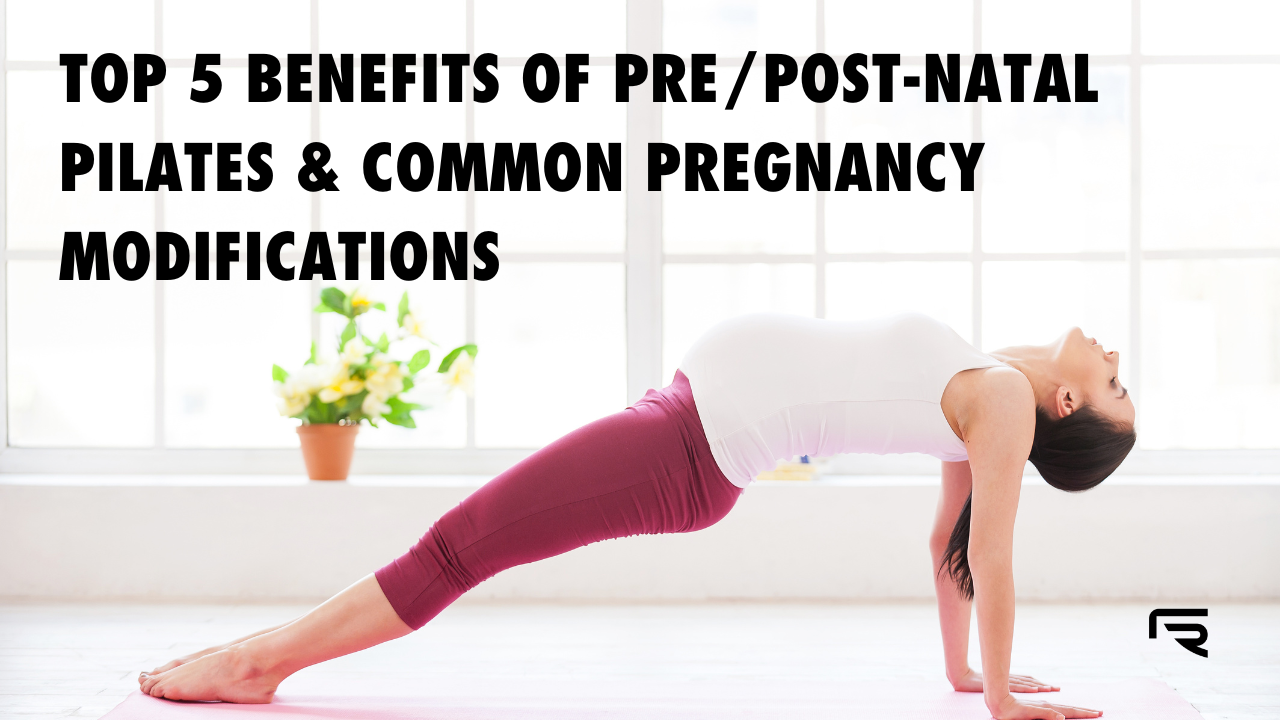Top 5 Benefits of Pre/Post-Natal Pilates & Common Pregnancy Modifications

Prioritizing a Pilates Reformer routine throughout pregnancy can be one of the most effective ways to workout while also taking care of yourself and the new life that’s growing inside of you. By focusing on your breathwork, stability, mobility, and flexibility, you’re giving your body the opportunity to maintain and even gain strength that will prepare it for childbirth, as well as the months that follow when you are put to the test of taking care of a baby.
Even celebrities like Kourtney Kardashian and Miranda Kerr have kept up their Pilates Reformer practice during pregnancy. From in-person Reformer classes to the virtual options available with FRAME, there are multiple ways to incorporate Reformer Pilates into your pre-natal and post-natal plans.
Always consult a doctor before beginning a new workout routine, especially during pregnancy. Discuss the best options for your body with your doctor and how you can modify the exercises to accommodate your individual circumstances.
Top 5 Benefits of Pre- and Post-Natal Reformer Pilates
It is generally recommended that you transition to specific pre-natal Pilates Reformer classes as soon as you find out you are pregnant. These classes have more of a focus on the modifications that are necessary for your growing baby and can help you address the specific stressors and strains your changing body is facing. Then, as you transition to post-natal classes, the focus will be on strengthening any muscles that may have weakened during childbirth, as well as the new strength required for taking care of a baby that’s getting bigger with each passing week.
With your dedicated pre- or post-natal Reformer routine in place, here are a few of the benefits you can expect:
Helps Improve Posture and Reduce Back Pain
Pregnancy can throw off your posture and center of gravity since you are adding significant and concentrated weight to your body in a way that feels completely different from anything you’ve previously experienced. By practicing Reformer Pilates throughout your pregnancy, you will strengthen your core and add stability and balance to your lower and middle back, hips, and shoulders. This can help improve and maintain a comfortable posture, while also reducing back pain.
Prepares the Body for Delivery
Since nearly every Pilates movement originates from the core, or the ‘powerhouse,’ practicing Reformer Pilates during pregnancy helps strengthen the body for delivery. Between targeting your glutes, legs, and deep transverse abdominal muscles, you are setting your body up to go into delivery with strength. While you can’t predict what will happen, you can prepare, and Reformer Pilates helps you do that.
Reduces Fluid Retention
Because you are working your leg muscles and embracing movement throughout a Pilates Reformer class, you’re helping to reduce both fluid retention and leg cramps which can happen during pregnancy.
Strengthens the Pelvic Floor
Pregnancy can change your body in ways that you expect and don’t expect. A weakened pelvic floor and incontinence is one of those surprises that many women don’t know to prepare for. By practicing Reformer Pilates, you can strengthen your pelvic floor and help reduce the risk of bladder leaks that can often develop as a result of pregnancy.
Speeds Up Recovery Post-Delivery
Continuing gentle, modified pre-natal Pilates Reformer classes after delivery help ease your body back into movement and speed up the physical recovery post-delivery. Reformer Pilates can calm your mind while strengthening your body and help you regain control over your own body again.
Provides an Opportunity to Relax
Taking a Reformer Pilates class means giving yourself time to simply focus on your breathing and your body. You are truly present for that 30 minutes or hour that you get on the Reformer. As you intentionally complete each move, you’re giving yourself an opportunity to relax, destress, and calm your nerves, all of which is necessary both before and after the baby comes.
Most Common Modifications for Pre- and Post-Natal Reformer Pilates
When comparing regular Reformer Pilates to pre- and post-natal Reformer Pilates, the biggest difference is that Pilates before and after pregnancy will avoid any postures where you are lying face down or flat on your back for longer than ten minutes.
Additionally, you’ll want to avoid any moves that compress the core, which includes all crunches and abdominal contractions. You can, however, do side bends that strengthen closely related muscles. Bridges should also be avoided since they put too much pressure on the vein that supplies blood to your heart.
However, make sure to consult with your Pilates instructor and your doctor before continuing your Pilates routine or adopting any modifications to your practice.

